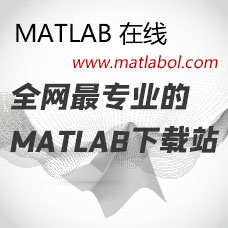-
高考志愿 填报综合 参考系统
高考志愿填报综合参考系统是一个CS模式管理系统,主要包括两大方面,一方面是开发和维护后台数据库,另一方面是前台应用程序的开发.对于前者要求建立起数据一致性和完整性强.数据安全性好的库。而对于后者则要求应用程序功能完备,易使用等特点。具体的来说,我们用微软的 SQL SERVER 2000来作为后台的数据库, SQL SERVER 2000是一个为前台服务的后台开发工具,他提供了多种面向对象的开发工具.特别的是,数据库开发人员能够轻松的进行数据库建立工作。高考志愿填报综合参考系统为用户提供大量的高考信息,包括高校信息,专业信息等等,方便用户快捷查询,测试,找到适合自己的专业。
- 2020-12-05下载
- 积分:1
-
常用STL模型文件
常用的STL模型文件,可用于STL显示与编辑相关程序的开发与测试
- 2021-05-06下载
- 积分:1
-
maxwell 3D eddy current 仿真
maxwell 3D eddy current 仿真
- 2020-02-03下载
- 积分:1
-
学生社团与机构管理系统
各高校适用的社团管理系统,包含有个学生组织的管理,资料的上传,以及会员,管理员的应用等。
- 2020-11-29下载
- 积分:1
-
编译课程设计报告 语法分析器.doc
编译课程设计报告 语法分析器.doc一、实验题目 设计一个简单的表达式语法分析器 (采用递归下降方法设计实现)二、实验目的1、 了解形式语言基础及其文法运算;2、 熟悉语法分析原理及4种常用的语法分析方法;其中: 四种算法为(1)设计算术表达式的递归下降子程序分析算法(2)设计算术表达式的LL(1) 分析算法(3)设计算术表达式的简单优先分析算法(4)设计算术表达式的SLR(1) 分析算法 3、选择上述一种方法并设计一个表达式的语法分析器。 (本实验设计的是递归下降的表达式语法分析器)三、实验内容
- 2020-11-29下载
- 积分:1
-
MFC写的学生宿舍管理系统
自己的毕业设计,当时可是获得优秀毕业论文的.本课题预期实现一个基于VC++/Access的宿舍管理系统。用户交互界面友好,操作方便、快捷,保证各类数据信息能实现正确、及时的存储以及快速查询,实现对宿舍的高效管理。系统预期实现以下功能: 1、用户登录2、学生信息管理(1)添加入住学生(2)学生信息查询(3)学生信息修改(4)学生离校登记等3、来访人管理4、宿舍管理(1)查看空宿舍、空铺 (2)学生调换宿舍 (3)卫生评分 (4)维修登记 等5、后勤管理 (1)添加管理员 (2)管理员考勤等
- 2020-12-05下载
- 积分:1
-
基于labview的温度采集系统
基于labview开发的温度采集系统程序及界面
- 2019-12-17下载
- 积分:1
-
MATLAB车辆的线性跟驰模型 刺激反应
MATLAB初学者的练手之作,瑕疵较多,仅供参考
- 2020-11-29下载
- 积分:1
-
STM32遥控平衡车,陀螺仪用的MPU6050,解算欧拉角用的DMP
本人辛勤所写,,要的分有点高。哈哈,不过确实值,因为这是两个程序。包括遥控器的程序也提供了。配有视频,有问题可以一块讨论,在视频最后留有群号。。。。。现在正在用卡尔曼或者互补滤波解算角度。。缩短控制周期,,算了,感兴趣群里见
- 2020-12-05下载
- 积分:1
-
Hadoop海量数据处理 技术详解与项目实战
Hadoop海量数据处理 技术详解与项目实战 Hadoop海量数据处理 技术详解与项目实战
- 2021-05-07下载
- 积分:1


